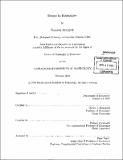| dc.contributor.advisor | Olivier J. Blanchard and Rudiger Dornbusch. | en_US |
| dc.contributor.author | Krajnyák, Kornélia | en_US |
| dc.contributor.other | Massachusetts Institute of Technology. Dept. of Economics. | en_US |
| dc.date.accessioned | 2005-08-23T19:26:03Z | |
| dc.date.available | 2005-08-23T19:26:03Z | |
| dc.date.copyright | 2002 | en_US |
| dc.date.issued | 2002 | en_US |
| dc.identifier.uri | http://hdl.handle.net/1721.1/8355 | |
| dc.description | Thesis (Ph. D.)--Massachusetts Institute of Technology, Dept. of Economics, 2002. | en_US |
| dc.description | MIT Institute Archives copy: p. 105 and p. 106 bound reversed; microfiche filmed in the same manner. | en_US |
| dc.description | Includes bibliographical references (p. 106-108). | en_US |
| dc.description.abstract | In Chapter 1, we estimate equilibrium dollar wages for 15 transition economies of Central and Eastern Europe (CEE) and the former Soviet Union. Equilibrium dollar wages are interpreted as full employment wages consistent with a country's physical and human capital endowment, and estimated by regressing actual dollar wages on productivity and human capital proxies in a short (1990-95) panel of 85 countries. The main results are: (1) equilibrium dollar wages have appreciated steadily in the Baltic countries and fast-reforming CEE transition economies, but have been flat in most CIS countries; and (2) 1996 actual dollar wages remained below estimated equilibrium dollar wages for most but not all transition countries covered. Chapter 2 investigates the effects on firms' budget constraints and on bank loan allocation of introducing a strict bankruptcy law in a transition economy. A stylized model of soft budget constraints suggests that bank loans tend to remain available for financially weaker firms due to the bank's financial commitment problem. The introduction of a strict bankruptcy law helps counter soft budget constraints for firms. As a result, the allocation of financial resources becomes more efficient in the sense of better firms receiving larger loans. Using data for a panel of Hungarian firms in 1989-92, I find evidence that introducing a strict bankruptcy law helped harden the firms' budget constraints. | en_US |
| dc.description.statementofresponsibility | by Kornélia Krajnyák. | en_US |
| dc.format.extent | 115 p. | en_US |
| dc.format.extent | 10986221 bytes | |
| dc.format.extent | 10985974 bytes | |
| dc.format.mimetype | application/pdf | |
| dc.format.mimetype | application/pdf | |
| dc.language.iso | eng | en_US |
| dc.publisher | Massachusetts Institute of Technology | en_US |
| dc.rights | M.I.T. theses are protected by copyright. They may be viewed from this source for any purpose, but reproduction or distribution in any format is prohibited without written permission. See provided URL for inquiries about permission. | en_US |
| dc.rights.uri | http://dspace.mit.edu/handle/1721.1/7582 | |
| dc.subject | Economics. | en_US |
| dc.title | Essays in economics | en_US |
| dc.type | Thesis | en_US |
| dc.description.degree | Ph.D. | en_US |
| dc.contributor.department | Massachusetts Institute of Technology. Department of Economics | |
| dc.identifier.oclc | 50544501 | en_US |
